United States Congress
Scholar and representative Lee H. Hamilton asserted that the "historic mission of Congress has been to maintain freedom" and insisted it was a "driving force in American government"[5] and a "remarkably resilient institution".One analyst argues that it is not a solely reactive institution but has played an active role in shaping government policy and is extraordinarily sensitive to public pressure.[8] In recent times, the American South and West have gained House seats according to demographic changes recorded by the census and includes more women and minorities.[8] While power balances among the different parts of government continue to change, the internal structure of Congress is important to understand along with its interactions with so-called intermediary institutions such as political parties, civic associations, interest groups, and the mass media.[34] Lame duck reforms according to the Twentieth Amendment reduced the power of defeated and retiring members of Congress to wield influence despite their lack of accountability.[37] President Roosevelt pushed his agenda in Congress by detailing Executive Branch staff to friendly Senate committees (a practice that ended with the Legislative Reorganization Act of 1946).[50] Partisanship returned, particularly after 1994; one analyst attributes partisan infighting to slim congressional majorities which discouraged friendly social gatherings in meeting rooms such as the Board of Education.[53] One source suggests post-Watergate laws amended in 1974 meant to reduce the "influence of wealthy contributors and end payoffs" instead "legitimized PACs" since they "enabled individuals to band together in support of candidates".[59][61][62] From 1970 to 2009, the House expanded delegates, along with their powers and privileges representing U.S. citizens in non-state areas, beginning with representation on committees for Puerto Rico's resident commissioner in 1970.[63] Analyst Michael Schudson suggested that greater publicity undermined the power of political parties and caused "more roads to open up in Congress for individual representatives to influence decisions".[66] One report suggested Congress posed the "biggest risk to the U.S. economy" because of its brinksmanship, "down-to-the-wire budget and debt crises" and "indiscriminate spending cuts", resulting in slowed economic activity and keeping up to two million people unemployed.[74] Women candidates began making substantial inroads in the later 20th century, due in part to new political support mechanisms and public awareness of their underrepresentation in Congress.Jim Crow laws, voter suppression and other forms of structural racism made it virtually impossible for women of color to reach Congress prior to 1965.The passage of the Voting Rights Act that year, and the elimination of race-based immigration laws in the 1960s opened the possibility for Black, Asian American, Latina and other non-white women candidates to run for Congress.Congress has authority over financial and budgetary policy through the enumerated power to "lay and collect Taxes, Duties, Imposts and Excises, to pay the Debts and provide for the common Defence and general Welfare of the United States".[4] Congress has an important role in national defense, including the exclusive power to declare war, to raise and maintain the armed forces, and to make rules for the military.[97] So-called signing statements are one way in which a president can "tip the balance of power between Congress and the White House a little more in favor of the executive branch", according to one account.They are assigned offices and allowances for staff, participate in debate, and appoint constituents to the four military service academies for the Army, Navy, Air Force and Coast Guard.[117] The Constitution concentrates removal powers in the Congress by empowering and obligating the House of Representatives to impeach executive or judicial officials for "Treason, Bribery, or other high Crimes and Misdemeanors".[121] Investigations are conducted to gather information on the need for future legislation, to test the effectiveness of laws already passed, and to inquire into the qualifications and performance of members and officials of the other branches.[4] Congress is split into two chambers – House and Senate – and manages the task of writing national legislation by dividing work into separate committees which specialize in different areas.It prepares an annual Economic and Budget Outlook with a mid-year update and writes An Analysis of the President's Budgetary Proposals for the Senate's Appropriations Committee.[145][146] After each ten-year census, states are allocated representatives based on population, and officials in power can choose how to draw the congressional district boundaries to support candidates from their party.[8][166][167][168][169][170][171] Scholar Julian Zeliger suggested that the "size, messiness, virtues, and vices that make Congress so interesting also create enormous barriers to our understanding the institution ..."[172] Other scholars suggest that despite the criticism, "Congress is a remarkably resilient institution ... its place in the political process is not threatened ... it is rich in resources" and that most members behave ethically.We would not have survived as a nation without a Congress that represented the diverse interests of our society, conducted a public debate on the major issues, found compromises to resolve conflicts peacefully, and limited the power of our executive, military, and judicial institutions ...The popularity of Congress ebbs and flows with the public's confidence in government generally ... the legislative process is easy to dislike – it often generates political posturing and grandstanding, it necessarily involves compromise, and it often leaves broken promises in its trail.[176][177][178] Others argue that the Connecticut Compromise was deliberately intended by the Founding Fathers to construct the Senate so that each state had equal footing not based on population,[174] and contend that the result works well on balance.[198] Members of Congress make fact-finding missions to learn about other countries and stay informed, but these outings can cause controversy if the trip is deemed excessive or unconnected with the task of governing.For example, The Wall Street Journal reported in 2009 that lawmaker trips abroad at taxpayer expense had included spas, $300-per-night extra unused rooms, and shopping excursions.

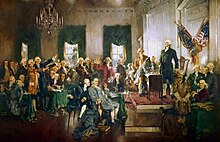



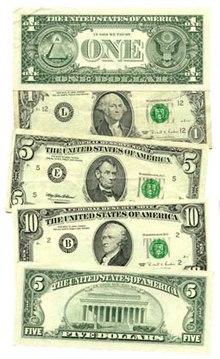

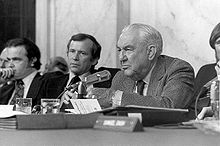


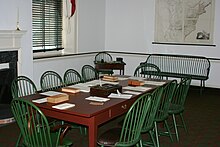

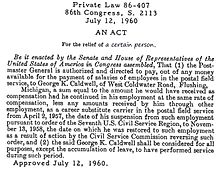


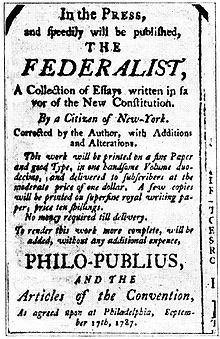
119th United States CongressUnited States Capitol119th CongressBicameralSenateHouse of RepresentativesCongress of the ConfederationPresident of the SenateJD VanceSenate president pro temporeChuck GrassleySpeaker of the HouseMike Johnsonnon-voting membersRepublicanDemocraticIndependentNovember 5, 2024November 3, 2026Washington, D.C.United States of AmericaUnited States ConstitutionPolitics of the United StatesFederal governmentConstitution of the United StatesTreatiesSpeakerMajority LeaderSteve ScaliseMinority LeaderHakeem JeffriesCongressional districtsPresidentPresident Pro TemporeJohn ThuneChuck SchumerExecutivePresident of the United StatesDonald TrumpVice President of the United StatesCabinetFederal agenciesExecutive OfficeJudiciarySupreme Court of the United StatesChief JusticeJohn RobertsThomasSotomayorGorsuchKavanaughBarrettJacksonInferior Courts of the United StatesCourts of appealsDistrict courts Court of International TradeAlien Terrorist Removal CourtJudicial Panel on Multidistrict LitigationForeign Intelligence Surveillance CourtForeign Intelligence Surveillance Court of ReviewOther tribunalsElectionsPresidential electionsMidterm electionsOff-year electionsPrimary electionsPresidential primaryAlabamaAlaskaArizonaArkansasCalifornia ColoradoConnecticutDelawareFloridaGeorgiaHawaiiIllinoisIndianaKansasKentuckyLouisianaMarylandMassachusettsMichiganMinnesotaMississippiMissouriMontanaNebraskaNevadaNew HampshireNew JerseyNew MexicoNew YorkNorth CarolinaNorth DakotaOklahomaOregonPennsylvaniaRhode IslandSouth CarolinaSouth Dakota TennesseeVermontVirginiaWashingtonWest VirginiaWisconsinWyomingAmerican SamoaNorthern Mariana IslandsPuerto RicoU.S. Virgin IslandsElections in the District of ColumbiaList of electionsPolitical partiesThird partiesLibertarianList of political partiesPolitical ideologiesConservatismFiscalLiberal
